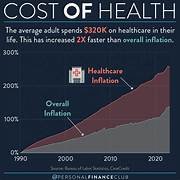The Rising Costs of Health Insurance in the USA: A Comprehensive Analysis
Health insurance in the United States has long been a critical safeguard against the financial burdens of medical care. However, the escalating costs of health insurance have become a significant concern for individuals, families, and employers alike. In 2024, these costs continue to rise due to a combination of factors, including increased medical expenses, policy changes, and evolving market dynamics. This article delves into the causes, impacts, and potential solutions to the growing costs of health insurance in the U.S.
1. Overview of Health Insurance Costs
Health insurance costs include premiums, deductibles, copayments, and coinsurance, all of which have been steadily increasing over the past decade. In 2024:
- Premiums: The average annual premium for employer-sponsored family coverage is over $22,000, with employees contributing approximately $6,500 out of pocket.
- Deductibles: For individual plans, deductibles average $2,000 annually, requiring consumers to pay this amount before insurance coverage begins.
- Out-of-Pocket Expenses: Aside from premiums and deductibles, Americans spend an average of $1,300 annually on other medical costs, such as copayments and prescription drugs.
2. Factors Driving the Rising Costs
a. Increased Healthcare Spending
The U.S. spends more on healthcare per capita than any other nation, with costs reaching over $4.3 trillion in 2023. Contributing factors include:
- Hospital Costs: Hospital services account for nearly 30% of total healthcare spending. Rising wages for healthcare workers and the cost of advanced medical technologies have driven these expenses higher.
- Pharmaceutical Prices: Specialty drugs, which treat complex conditions such as cancer and autoimmune diseases, remain a significant cost driver. Even with insurance, these drugs can cost thousands of dollars per month.
b. Administrative Expenses
Administrative costs, including billing and insurance-related activities, make up approximately 8% of healthcare spending in the U.S., far exceeding rates in other high-income countries.
c. Chronic Diseases and Aging Population
The prevalence of chronic conditions like diabetes, heart disease, and obesity requires long-term, expensive treatments. Additionally, an aging population increases the demand for Medicare services and other health resources.
d. Legislative and Policy Impacts
Policy changes, including the expansion of Medicaid in some states and ongoing adjustments to ACA subsidies, have reshaped the health insurance market. However, these changes often fail to address underlying cost drivers, such as provider consolidation and high drug prices.
3. Impacts on Individuals and Families
Financial Burden
Rising health insurance costs strain household budgets, particularly for middle-income families. Even insured individuals often delay or forgo care due to high deductibles and out-of-pocket costs.
Access to Care
High costs lead to reduced access to necessary treatments. For example, surveys reveal that many Americans skip routine check-ups or prescriptions due to affordability concerns.
Mental Health Effects
The financial stress of managing health insurance expenses contributes to mental health challenges, including anxiety and depression, for millions of Americans.
4. Employer-Sponsored Insurance Challenges
Employers, who provide coverage to nearly half the U.S. population, face significant challenges:
- Cost-Sharing: Many employers pass rising costs onto employees through higher premiums and deductibles.
- Small Businesses: Smaller companies struggle to offer competitive benefits due to escalating group insurance rates.
5. Disparities in Health Insurance Costs
- Geographic Variations: Premiums and deductibles vary widely by state, with rural areas often facing higher costs due to limited provider networks.
- Income Inequality: Low-income individuals, even those eligible for subsidies, frequently struggle to afford comprehensive coverage.
6. Potential Solutions to Rising Costs
a. Policy Reforms
Policymakers can address cost growth by:
- Negotiating Drug Prices: Expanding Medicare’s authority to negotiate prices for a broader range of medications could significantly reduce pharmaceutical expenses.
- Limiting Administrative Costs: Streamlining billing systems and adopting uniform standards for insurance claims can cut unnecessary expenses.
b. Emphasis on Preventive Care
Preventive care, such as vaccinations and screenings, can help reduce long-term healthcare spending by addressing issues before they become severe.
c. Technological Innovations
Advancements in telemedicine and digital health tools can improve access while reducing overhead costs associated with in-person visits.
d. Employer Strategies
Employers can explore alternative options, such as high-deductible health plans paired with Health Savings Accounts (HSAs) or implementing wellness programs to reduce claims.
7. The Future of Health Insurance Costs
The trajectory of health insurance costs remains uncertain, but key trends are emerging:
- Increased Consumer Involvement: Tools that allow individuals to compare plans based on cost and coverage are becoming more common, empowering consumers to make informed decisions.
- Shift to Value-Based Care: Payment models that reward providers for efficiency and patient outcomes rather than service volume are gaining traction, potentially reducing costs in the long term.
Conclusion
The rising costs of health insurance in the U.S. reflect broader challenges within the healthcare system. Addressing these issues requires a multi-faceted approach, including policy reforms, technological advancements, and a focus on preventive care. While solutions exist, their implementation will require collaboration among government agencies, private insurers, employers, and consumers. As the nation grapples with these rising costs, ensuring affordability and accessibility remains a pressing goal for 2024 and beyond.
